 Purge, Finland’s Oscar entry is set in Estonia in the time period before the Stalinist deportations in 1949 until after the country’s independence in 1991. Two women from two different eras are linked by separate tales of deceit, desperation and fear. Aliide has experienced the horrors of the Stalin era and the deportation of Estonians to Siberia. Zara is a victim of human trafficking and has just escaped from the claws of the present-day Russian mafia. Aliide and Zara engage in a complex arithmetic of suspicion and revelation to distill each other’s motives. Gradually their stories emerge, with the culmination of a tragic family drama of rivalry, lust, and loss.
Purge, Finland’s Oscar entry is set in Estonia in the time period before the Stalinist deportations in 1949 until after the country’s independence in 1991. Two women from two different eras are linked by separate tales of deceit, desperation and fear. Aliide has experienced the horrors of the Stalin era and the deportation of Estonians to Siberia. Zara is a victim of human trafficking and has just escaped from the claws of the present-day Russian mafia. Aliide and Zara engage in a complex arithmetic of suspicion and revelation to distill each other’s motives. Gradually their stories emerge, with the culmination of a tragic family drama of rivalry, lust, and loss.
Originally written as a play of the same name by Sofi Okansen which has been performed in Finland, Germany, Sweden, UK and in the US, “Purge” has gone on to become a unique cultural phenomenon with pedigree. Okansen turned her play into a best-selling, critically acclaimed novel which not only won a mass of Finnish and European awards including the 2007 Nordic Council Literature Award and European Book Prize, but was also translated into 41 languages. The book was also named one of the best books of 2010 by London’s Sunday Times. In 2010, Estonian composer Jüri Reinvere announced that he and the Finnish National Opera would stage an adaptation of Sofi Oksanen’s novel with collaboration by Oksanen. The world premiere of “Purge” the opera took place in April 2012, opening to enthusiastic reviews.
The films was shot in Estonia, with Laura Birn, Liisi Tandefelt, Amanda Pilke, Krista Kosonen, Peter Franzén and Tommi Korpela in the lead roles. Scripted by Marko Leino and Jokinen, Purge was produced by Markus Selin and Jukka Helle, for Finland’s Solar Films, in co-production with Estonia’s Taska Film. Nordisk Film Finland is the distributor in Finland and Denmark’s TrustNordisk is handling international sales.
Taking both audiences and critics by storm when it premiered in Finland in September, 2012, “Purge” began its international film festival life at the Busan International Film Festival in October, 2012.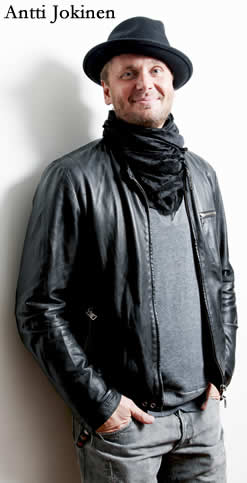
“Purge” is written and directed by world renowned music video director by Antti J. Jokinen who has worked with such stars as Celine Dion, Shania Twain, Beyonce, Eminem, Wyclef Jean and Korn. Originally born in Finland, Jokinen attended college in North Carolina where he majored in Film, graduating at the top of his class. He went on to work for MTV in New York before returning to Finland to co-found Solar Films in 1995 which has gone on to become Finland’s leading production company producing award-winning feature films, television dramas and thousands of hours of entertainment for Finnish television.
With firm roots in Hollywood, Jokinen’s first feature film was “The Resident” starring Hilary Swank and Jeffrey Dean Morgan, based on Jokinen’s original screenplay which released in 2011. That same year, after spending 12 years working in Hollywood, director-writer Antti Jokinen decided to film the theatrical adaptation of “Purge” in his home country of Finland. Jokinen adapted the screenplay for “Purge” from Sofi Okansen’s play and novel with writer Marko Leino.
Bijan Tehrani: What interested you in the stage play to write a screenplay from it and make a film from it?
Antti Jokinen: First of all, I was very interested in the historical aspect of gulags and I also liked how it was a micro-world, how it influences a small group of people or a family. Gulags were as big as the Holocaust, Stalin was as bad as Hitler, he was trying to get rid of a whole country: I was attracted to the fact that this has not been told. I also liked that the main characters were women. I think there are enough movies about men, and this is a story about love and redemption, and also evil things that happened women. This was also a very successful book in Scandinavia and I liked finding a book from Finland where I am originally from even though I have lived in Los Angeles for twelve years. I think it was good for me and self-educative to make a movie out of this book.
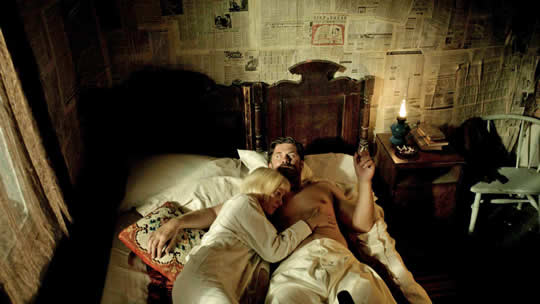 BT: I’ve read the play and I found it was a very challenging piece to turn into a movie…
BT: I’ve read the play and I found it was a very challenging piece to turn into a movie…
AJ: Yes, a very challenging part was that it happened in such a broad period of time so the stories are not going in a linear fashion. Also, in a book you can take breaks. Because there was so much violence in gulags and it was such a brutal time, it was difficult to find a way so that people could still hold on to the story, we had to be cautious with the characters. The most difficult was probably the ending, and I hope I was able to solve this, because the book and the play end without redemption or without any hope, it’s a very depressing ending. So the last twenty minutes of the film are something that I completely created because I think in a movie, all these things are put onto you – music, sound, close-ups, all these things, it becomes very important that there is some sort of redemption.
BT: I think it is important in our world today, when we are going through similar things in all corners of the world in a different way to have this hope because historically hope has helped us. I understand this mentality of depression sometimes in the Nordic countries but I think what you did is very important.
AJ: I agree with you. I think every movie regarding these themes should leave a certain amount of hope. I think it’s also important to understand that when people survive, while their morale has been crushed by war or by human trafficking as in Purge, there always remains hope. I think it’s important to show these women who survived such difficult situations still have redemption, still have hope, a life to move on, and there is a new beginning somewhere.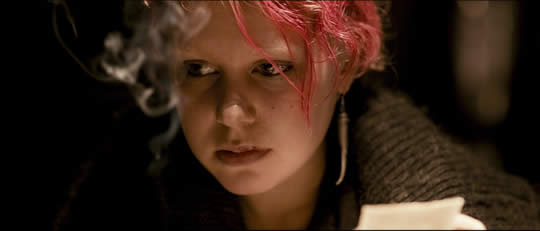
BT: You have also managed to bring the two women’s lives and weave them together in a very nice way so that there is continuity there. How did you manage to do that?
AJ: Good question. I’m glad you feel that way. I think it was key to remember that violence towards women has happened from a long time ago and is still happening. It’s just shape-shifting. So the experience these two women go through is similar in a sense. The difference between them two, which old Aliide realizes, is that her morale was crushed by the gulag and the Soviet army that came through Estonia -she ended up because of love giving up her sister – but Zara, the younger girl, was a survivor and her morale was never crushed. So old Aliide wanted redemption and to save her life and make something good out of the past. Both their motives were very clear: Sara wanted to survive and old Aliide needed redemption. For me as a filmmaker it was very interesting because often times in a film we understand the character’s actions because we know what they have done before but here we show old Aliide’s reacting to something Sara said and we don’t really understand. But then, we jump back in time some forty years before and we realize her motives. So we went a bit backwards: we first see her reaction and then her motives.
BT: The casting is amazing for both parts. How did you go about casting the actors for this film?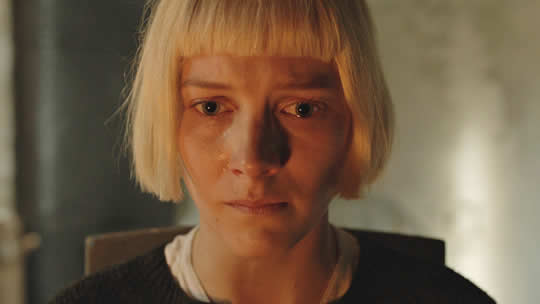 AJ: I had been gone from Finland for twelve years. I graduated from film school there and wrote and directed a few TV series right after school but I had been gone for twelve years. It was a major casting: I think I shot 300 actresses in Finland. But at the end of the day, it was actually very easy. I was able to find two or three top candidates for each character fairly quickly, a few months. We have great actors in Finland. Unfortunately the market is so small that movies are often not allotted much time but we were lucky on this movie to have double the budget of a typical Finnish movie, which compared to the American market or even the European market is a rather small amount of money, but we used a lot of this money on time. We shot this movie in fifty days while usually in Finland films are shot in twenty days or even fifteen.
AJ: I had been gone from Finland for twelve years. I graduated from film school there and wrote and directed a few TV series right after school but I had been gone for twelve years. It was a major casting: I think I shot 300 actresses in Finland. But at the end of the day, it was actually very easy. I was able to find two or three top candidates for each character fairly quickly, a few months. We have great actors in Finland. Unfortunately the market is so small that movies are often not allotted much time but we were lucky on this movie to have double the budget of a typical Finnish movie, which compared to the American market or even the European market is a rather small amount of money, but we used a lot of this money on time. We shot this movie in fifty days while usually in Finland films are shot in twenty days or even fifteen.
I think Scandinavian actors have been underrated because of the language barrier. I found that my cast in Finland was as talented as actors I’ve worked with in the U.S. but they just never have been given the opportunity to really get deep into the characters. Here, we were able to spend a lot of time working together and I was very happy with the people I found. The scale of good actors in Finland or Scandinavia is much broader than shown in this film as there were many other great ones.
BT: I am sure you have been asked this question many times but how did your experience in the U.S. with music videos influence your style of filmmaking?
AJ: I take my career as a music video director as my proper film school. It gave me the challenges I needed. I know all the technological aspects of filmmaking, I know how to deal with actors, music stars and so on but I think it also gave me time to find my voice. I didn’t want Purge to look like a music video, I wanted more of a rough, documentary, drama style. I had gotten the colorful music video style out of my system and was ready to move on to a different style. Also, because I know how to shoot a beautiful picture, how to work on cinematography and so on, I was able to concentrate and put all my effort on the script and the characters. I already knew the other aspects and it was very easy for me to explain them to other people.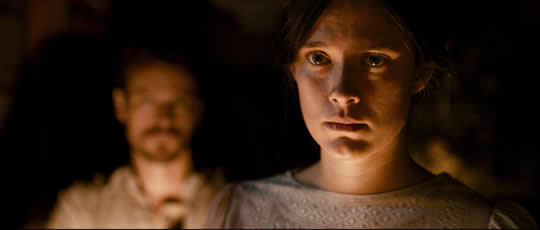
BT: Do you think the possibility of an Oscar nomination or even a win would help the film?
AJ: From speaking with my agency and CAA, we may have a good chance of being nominated but I have never thought about winning at this stage. There are many very good films from many other countries. I think if we were nominated, I’d already be the happiest man alive. I think that it’s very difficult for many filmmakers to think of film as a competition because it’s not like track field or football. Every film is subjective. Of course, to be nominated or even to be considered to be nominated is an honor. It would be great to have a good response and it feels good of course.
BT: Any future projects that you are working on right now?
AJ: I always thought it would be great to make one movie in Scandinavia and one movie in the US because in the US obviously you have great talent and more money while in Europe you have total freedom as a director. I don’t think Purge could have ever been made in the US because of the circumstances and how it was told, the violence, and it’s not a three-act movie either, it doesn’t have that glamor of a Hollywood film… On the other hand, I appreciate what both places have to offer. I have two projects in America and two projects in Finland. I should know this month. The Finnish projects are financed but I am still hoping I can do the American movies first and then do the Finnish films. But I am happy to work in Europe, I will just keep on working. With the kind of films I want to make, I will definitely not go to Hollywood and make a mindless horror film anymore!

